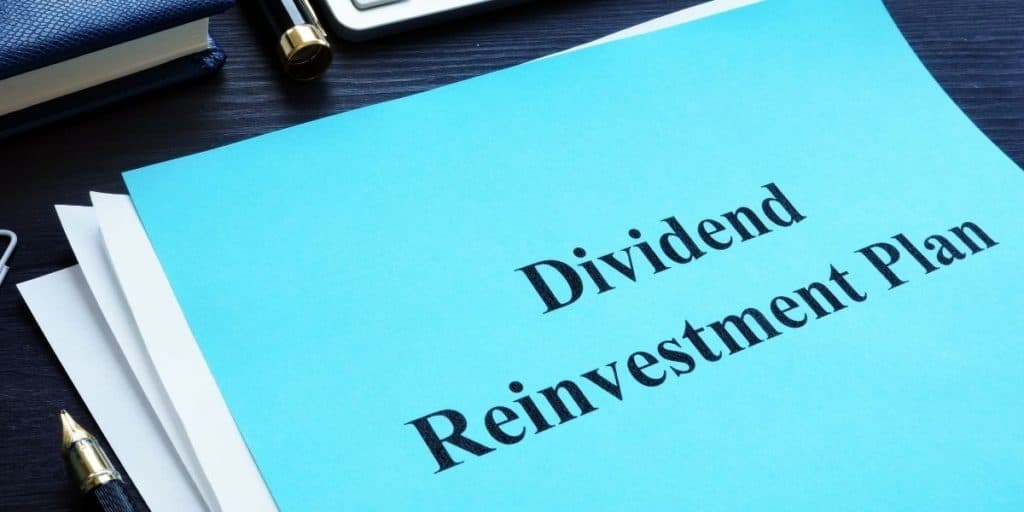Mutual funds provide a high level of diversification due to the variety of stocks, bonds, and other assets contained therein. What happens when some of these stocks pay dividends? Do the funds automatically reinvest?
Mutual funds don’t automatically reinvest dividends. Investors who wish to have dividends reinvested automatically have to notify the fund company or broker to set it up. However, some funds include automatic reinvestment as a feature, allowing investors to assent to it when purchasing the fund.
How does automatic dividend reinvestment work? What are the advantages? I’ll look at all these and several other things for you to consider as a mutual fund investor in this article. So, read on!
IMPORTANT SIDENOTE: I surveyed 1500+ traders to understand how social trading impacted their trading outcomes. The results shocked my belief system! Read my latest article: ‘Exploring Social Trading: Community, Profit, and Collaboration’ for my in-depth findings through the data collected from this survey!
Table of Contents
How Does Automatic Dividend Reinvestment Work?
If your mutual fund contains some dividend-paying stocks, you’ll receive a check or direct deposit into your bank account once dividends are paid. However, many people don’t have an immediate need for this extra cash.

So, instead of accepting the dividends, they mandate the investing company to reinvest the total sum into the mutual fund. The extra cash will typically go towards increasing holdings of the particular stock in the fund.
Where feasible, the dividend may be reinvested into the basket of securities in the fund. But this reinvestment isn’t automatic because some investors may need to claim the payouts for other purposes. This is why mutual funds that support reinvestment will ask your preferences when buying into the fund. Where they don’t ask, you can notify them of your intentions to have your dividends reinvested.
Advantages of Automatic Dividend Reinvestment
There are several advantages to automatic dividend reinvestment. They include:
Convenience
If your mutual fund capital dividends are set for automatic reinvesting, you won’t have to worry about manually reinvesting dividends after a distribution. The money just goes straight back into your portfolio, bringing some compound interest to you while you sit back and watch. You don’t have to set reminders to reinvest or always keep tabs on which securities have paid dividends.
Cost Savings
Some mutual funds charge shares or a commission anytime you buy into them.
If you choose to have your dividends automatically reinvested, most of these sales charges are waived on such purchases. The charges may seem minuscule, but they can add up over the term of your investment, especially when you consider the compounded gains on the saved fees.
On average, sales charges can cost between $5 and $10 per trade. If you receive dividends quarterly, that’s around $50 in savings. So, over the lifetime of your mutual fund investment, automatic reinvestment could land you a few extra thousands in returns.
Check with your investment house to confirm how much savings you’ll make by choosing to go with automatic dividend reinvestment.
Consistency
Most savers and investors often plan to consistently invest a certain amount over a fixed period, but not many people follow up on the plan for different reasons. Whether buying a set amount of stock when the market dips or the more methodical dollar-cost averaging, we often fail to keep up.
Automatic reinvestment of dividends guarantees you to consistently increase your investments. It’s similar to how automatic deductions from your paycheck works better than when you have to pay lump sums of premiums at intervals. Dividend reinvestments ensure a stable and regular purchase of stocks.
Flexibility
Most mutual funds have a minimum investment amount. If you want to increase your holdings, you have to come up with the recommended minimum, which could be as high as $5,000 in some of the big investment houses.
However, with automatic dividend reinvestment, you can enjoy fractional purchases—buy small slices of a single stock in one or more companies—without worrying about any restrictions. So, dividend reinvestments can help you increase your holdings in a costly mutual fund you won’t afford otherwise.
Volatility Investing
You’ve probably heard many experts talk about buying more stocks when prices fall and buy fewer as the prices make new highs. Unfortunately, many average investors end up doing the opposite. Dividend reinvestment helps you stick to this recommendation favored by some of the greatest investors, including Warren Buffet.
If your dividends are reinvested during a market decline, you stand to gain more than the average investor who’s likely to hold everything and wait for a market recovery. Your reinvestment will land you more shares at lower prices as well.
When Should You Avoid Dividend Reinvestment?
We’ve seen some of the best advantages of dividend reinvestment, but is it always a good idea? Not really. There are times when it makes more sense to claim the dividends in cash. We look at these scenarios below.
You’re Near Retirement
One of the main rules of investing in the stock market (which most mutual funds are based on) is to avoid putting in any money you might need over the next five years. The market is volatile. So, ensure you’re taking out as much money as possible from your mutual fund while you draw close to retirement. During this time, it’s often best to hold more cash or investments in instruments that aren’t as volatile such as treasury bonds.
You Need the Cash
Even if you’re not near retirement, there might be a scenario where you need to maintain your investments but collect any gains or dividends as they accrue. This especially works if you’ve accumulated a decent portfolio and taken advantage of compounding returns in the past.
In such a scenario, you’ll have a significant dividend stream you can claim as cash for as long as you need it without putting too much dent on the portfolio’s overall profitability.
You Want To Take More Calculated Risk Elsewhere
Mutual funds are volatile and can offer decent returns from time to time. However, returns from properly calculated high-risk investments will almost always beat it—when your investment works. So, it may be more sensible for some investors to make some high-risk bets with dividends paid out instead of reinvesting into the mutual fund.
Fund a promising startup in return for equity or put in money to more volatile activities like day trading the currency, crypto, or stock markets. Remember, it’s not for everyone, and there’s always a chance of losing the investment.
How To Automatically Reinvest Dividends?
Here’s what to do if you like to automatically reinvest your mutual fund dividends:
Buy Specially Tailored Products
As I mentioned, some providers have mutual funds where automatic reinvestment of gains and dividends are a feature. If you invest in one of these funds, you’ll get the feature automatically. Look around to see what’s available with your provider.
Request for Automatic Reinvestment
You can send a formal email to the provider (or reach them through other communication means) to request automatic reinvestment for your dividends. Besides, discuss the process with them thoroughly to see if such a request puts you at a disadvantage. Do they waive trade fees or not? Are there any fees you’ll pay to make the switch? Will you get a thorough report on what’s reinvested?

Author’s Recommendations: Top Trading and Investment Resources To Consider
Before concluding this article, I wanted to share few trading and investment resources that I have vetted, with the help of 50+ consistently profitable traders, for you. I am confident that you will greatly benefit in your trading journey by considering one or more of these resources.
- Roadmap to Becoming a Consistently Profitable Trader: I surveyed 5000+ traders (and interviewed 50+ profitable traders) to create the best possible step by step trading guide for you. Read my article: ‘7 Proven Steps To Profitable Trading’ to learn about my findings from surveying 5000+ traders, and to learn how these learnings can be leveraged to your advantage.
- Best Broker For Trading Success: I reviewed 15+ brokers and discussed my findings with 50+ consistently profitable traders. Post all that assessment, the best all round broker that our collective minds picked was M1 Finance. If you are looking to open a brokerage account, choose M1 Finance. You just cannot go wrong with it! Click Here To Sign Up for M1 Finance Today!
- Best Trading Courses You Can Take For Free (or at extremely low cost): I reviewed 30+ trading courses to recommend you the best resource, and found Trading Strategies in Emerging Markets Specialization on Coursera to beat every other course on the market. Plus, if you complete this course within 7 days, it will cost you nothing and will be absolutely free! Click Here To Sign Up Today! (If you don’t find this course valuable, you can cancel anytime within the 7 days trial period and pay nothing.)
- Best Passive Investment Platform For Exponential (Potentially) Returns: By enabling passive investments into a Bitcoin ETF, Acorns gives you the best opportunity to make exponential returns on your passive investments. Plus, Acorns is currently offering a $15 bonus for simply singing up to their platform – so that is one opportunity you don’t want to miss! (assuming you are interested in this platform). Click Here To Get $15 Bonus By Signing Up For Acorns Today! (It will take you less than 5 mins to sign up, and it is totally worth it.)
Conclusion
Mutual funds generally don’t automatically reinvest dividends out of the box. If you’re convinced about the advantages of automatic dividend reinvestment and want to enjoy some of them, you’ll have to get in touch with the investment company or broker to set it up.
Remember, auto-reinvesting dividends may not always be the best for you, depending on your financial situation and position. Younger adults still decades away from retirement can enjoy the benefits of compounding and weather any negative impact of market volatility more than those closer to retirement.
BEFORE YOU GO: Don’t forget to check out my latest article – ‘Exploring Social Trading: Community, Profit, and Collaboration’. I surveyed 1500+ traders to identify the impact social trading can have on your trading performance, and shared all my findings in this article. No matter where you are in your trading journey today, I am confident that you will find this article helpful!
Affiliate Disclosure: We participate in several affiliate programs and may be compensated if you make a purchase using our referral link, at no additional cost to you. You can, however, trust the integrity of our recommendation. Affiliate programs exist even for products that we are not recommending. We only choose to recommend you the products that we actually believe in.
Recent Posts
Exploring Social Trading: Community, Profit, and Collaboration
Have you ever wondered about the potential of social trading? Well, that curiosity led me on a fascinating journey of surveying over 1500 traders. The aim? To understand if being part of a trading...
Ah, wine investment! A tantalizing topic that piques the curiosity of many. A complex, yet alluring world where passions and profits intertwine. But, is it a good idea? In this article, we'll uncork...
